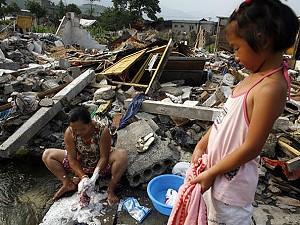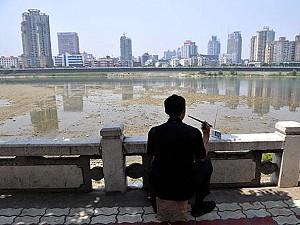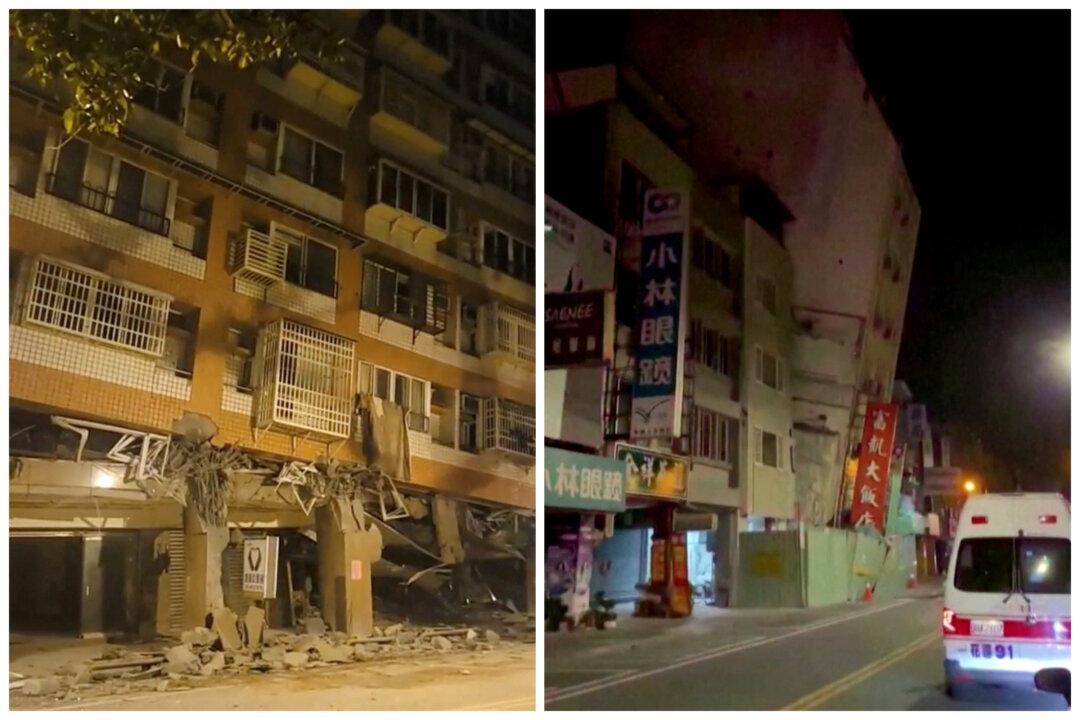CHENGDU, China—Chinese troops are carving a third drainage channel into the unstable dam holding back a big “quake lake”, as water levels rise and aftershocks send more debris tumbling into the water, state media reported on Monday.
Soldiers are also using short-range missiles and dynamite to blast apart boulders blocking the first channel, to speed up the flow of water, the official Xinhua agency said.
The Tangjiashan lake rose nearly a metre in 24 hours to Monday morning, and already stood over two metres above the drainage channel even though it only began operating on Saturday.
A spokesman for the lake relief operation said residents downstream had to beware against rising waters and landslides as flows increased but he saw no need yet for fresh evacuations.
“The overall situation remains secure and the flows are within what we are expected,” the spokesman Zhou Hua, from Mianyang city downstream from Tangjiashan, said by telephone.
“The outflow is increasing so we are urging people downstream to avoid dangers and stay out of designated areas, but there’s no need for additional emergency measures as this stage.”
The massive barrier of rocks and mud was created in mid-May when a major quake shook China’s southwestern Sichuan province, sending part of a mountainside crashing into the Tongkou river.

If the dam gives way it will create a floodwave that could threaten up to 1.3 million people downstream, many already forced from their homes by the quake.
Over 250,000 have been moved as a precaution, often to encampments close to their homes or earlier camp sites.
The arrival of China’s rainy season is an additional worry. The large catchment area for the lake, the biggest of around 30 created by the quake, means that 2 millimetres of rain could cause a water level rise of 1 metre, Xinhua has said.
“If the lake level does not start to at least stabilise, and preferably fall, soon then the danger level will rise substantially. This remains a deeply worrying situation,” said landslide expert David Petley, Wilson Professor at Durham University, adding that aftershocks were an on-going worry.
“A large slide into the lake could cause an instant over-top situation. The dam is unlikely to survive this intact,” he added in a Internet posting about the dam.
Soldiers are working long shifts on a diet of biscuits and instant noodles, with bulldozers and heavy machinery flown into the cut-off area by helicopter. A string of powerful aftershocks on Sunday and Monday have made the work even more challenging.
“Yesterday’s rain and aftershock disrupted our work, but we are working against time to make up for it,” Xu Qiangguo, an officer with a hydropower division of China’s armed police, was quoted saying on Monday.
The government also airlifted two drilling machines to the dam in a bid to get more information on the area’s geology.
Separately, the State Council Information Office said the death toll from the 7.9 magnitude quake had risen slightly to 69,142 as of midday Monday, with 17,551 others still reported missing. Some 374,065 people had been injured.






Friends Read Free